November 21, 2021 Analysis of EU national data
Summary: Several weeks ago, daily growth rates for cases have increased significantly in the majority of European nations, meaning that infection rates are growing rapidly. The fall resurgence appears to be underway in Northern US states and Eastern Provinces in Canada.
See the October 24 report that shows the comparison of growth rates then and 4 weeks prior for US states, Canadian provinces, and European nations. The situation in Europe is very concerning, showing an increase in growth rates by about 5%/day or more, for most countries. In the past week, the high case growth rates have not substantially declined.
US and Canadian studies are posted here.
Fits to case data
The plots below show the case and death data for 29 EU nations. The data fits were done using data up until November 20, 2021.
The large green, grey, and indigo circles are the daily cases, hospital admissions, and deaths respectively, averaged over each week. The smaller points show the daily values. The case data are used to define the periods for which transmission rate appears to be constant. The vertical lines show where the transmission rate is changed.
Since the rapid growth in daily cases in many countries will lead to very high numbers, it is expected that measures will be brought in to reverse that trend. Vertical lines in the future show hypothetical dates in which such measures might be introduced. The subsequent reduction in growth rate is a result of those changes. Future forecasts will delay those transitions, if no measures are introduced.
If the susceptible fraction is roughly constant, constant transmission rates lead to steady exponential growth or decline during, which appear as straight lines on these log-scale plots. With immunity growing, these lines are no longer straight - bending downwards due to the herd effect. The solid curves show the model expectations for cases, hospital admissions, and deaths, as determined from the case data.
The fraction of infections that lead to hospitalization or death are calibrated only to recent data. The extent that the model projection curves match earlier hospitalization and death data indicates whether probabilities for infections leads to severe disease is changing or not.
Since this analysis started in July, fine tuning of the model for dates prior to May was not done, resulting in some discrepency with data.
The dashed curves separately show the reported cases interpretted as coming from variants of concern, divided into two types B.1.1.7 (alpha) and B.1.617.2 (delta). The very rapid growth of cases is a combination of relaxing restrictions and the introduction of the delta variant.
Austria
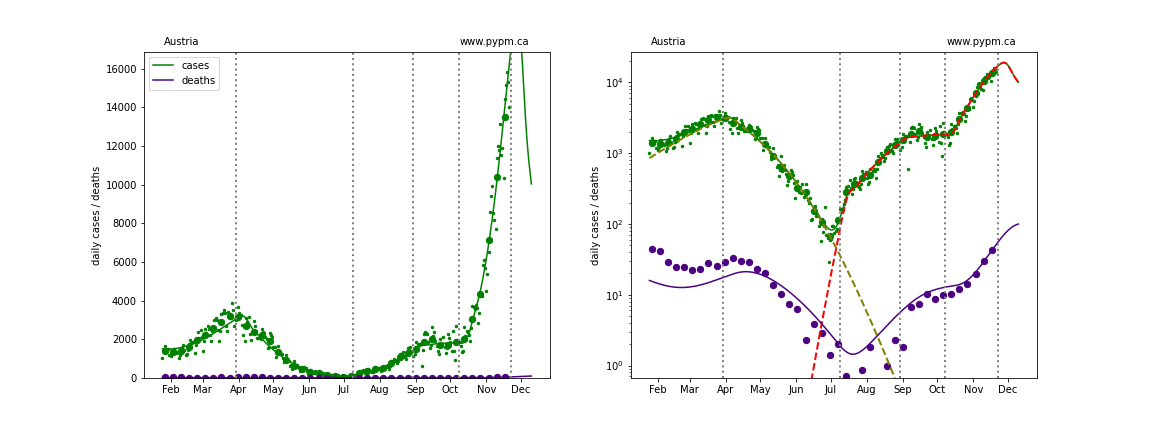
Belgium
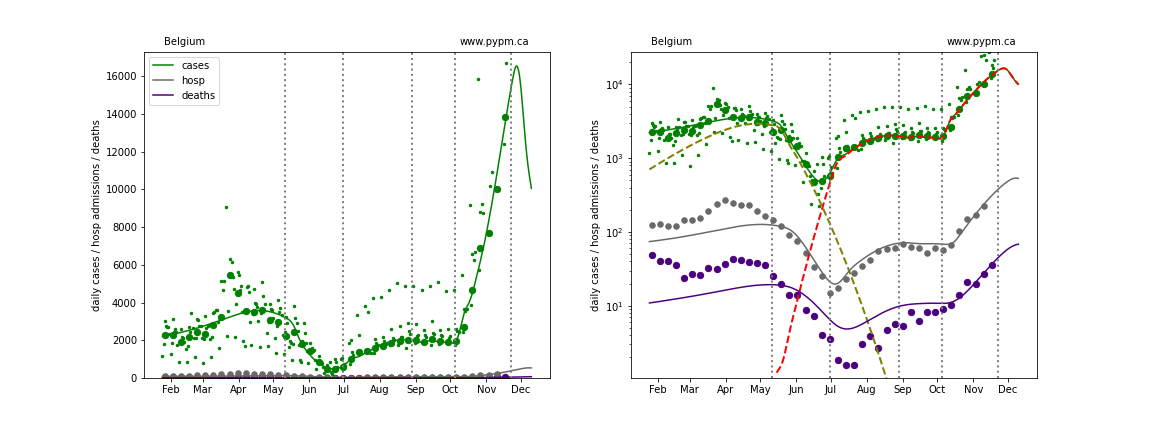
Bulgaria
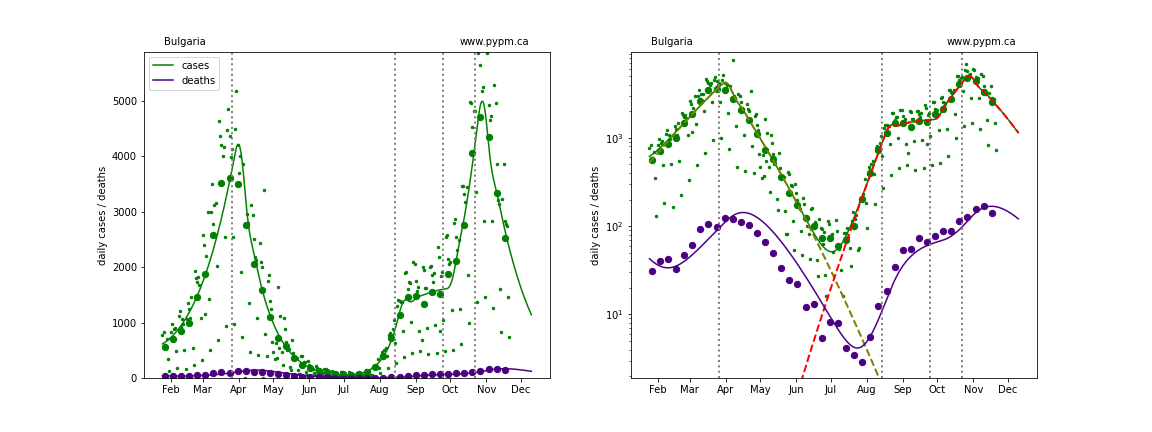
Croatia
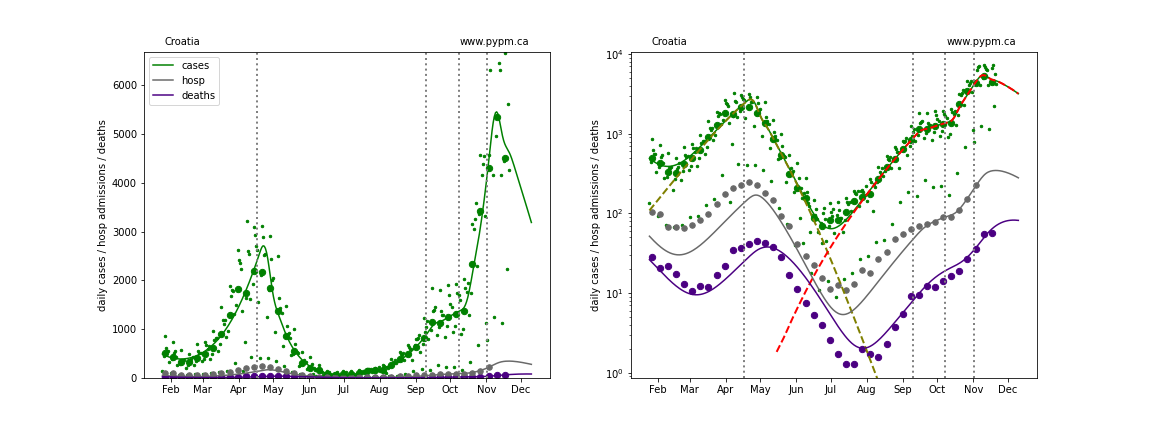
Cyprus
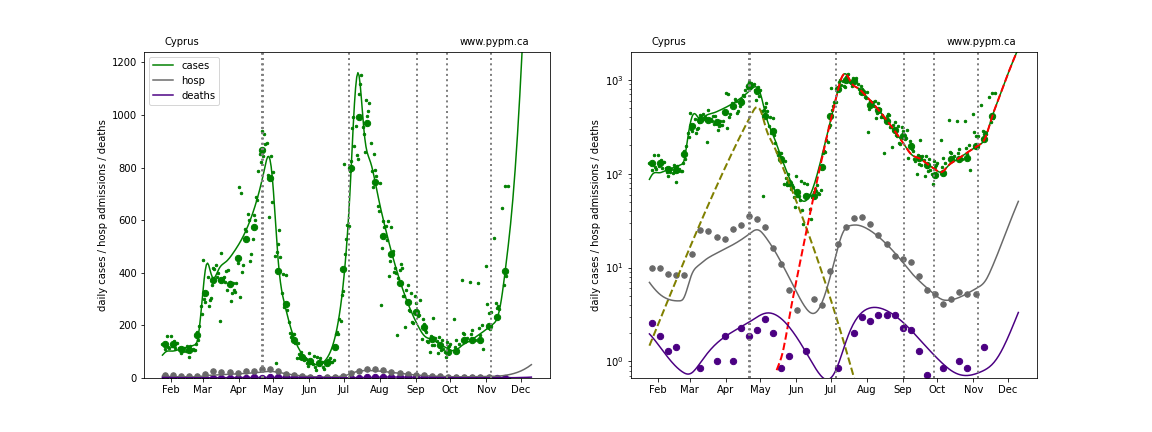
Czechia
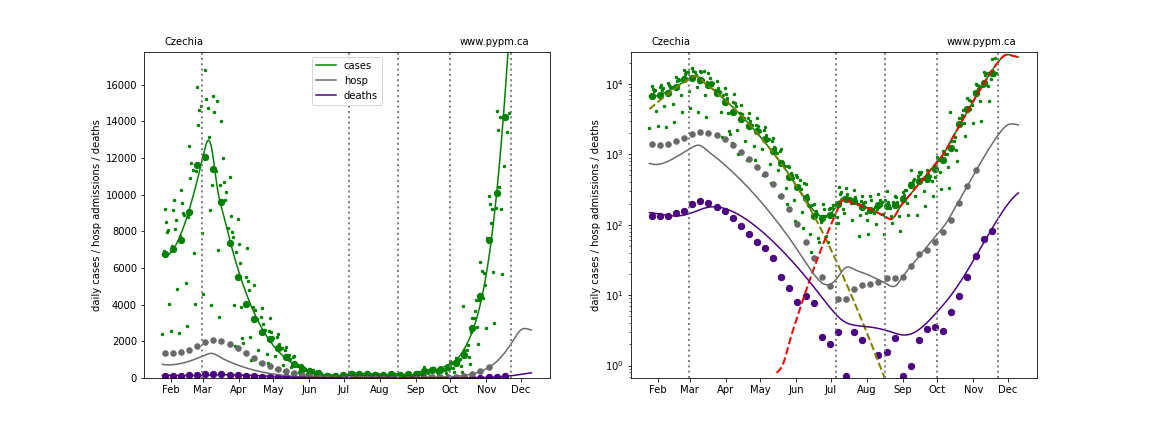
Denmark
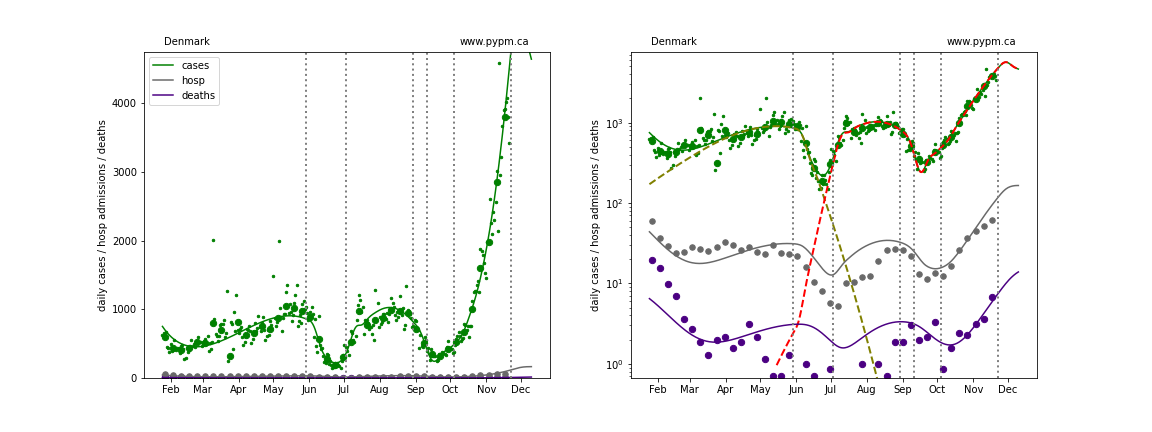
Estonia
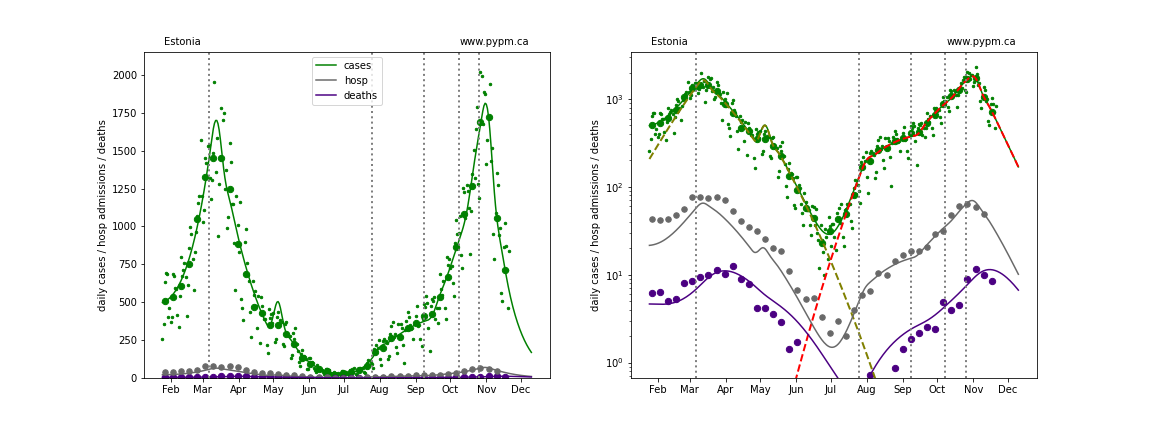
Finland
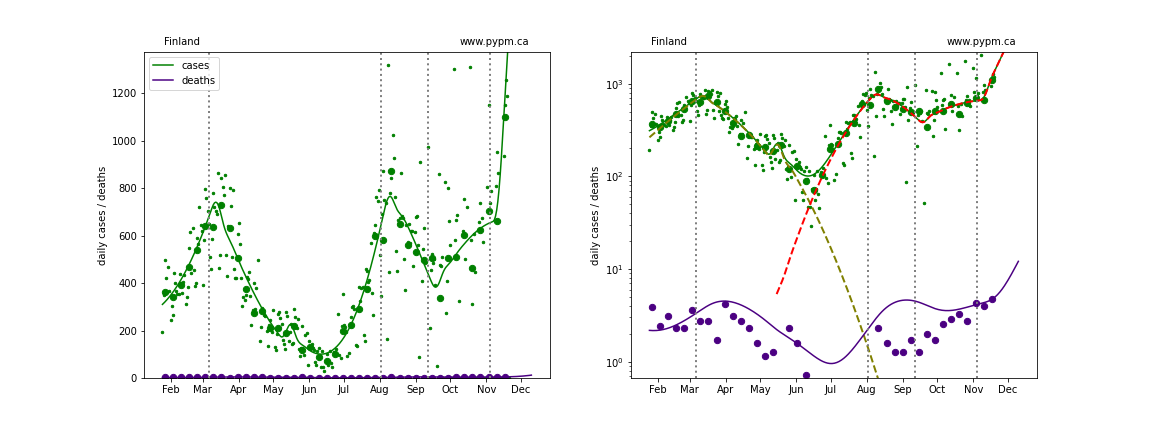
France
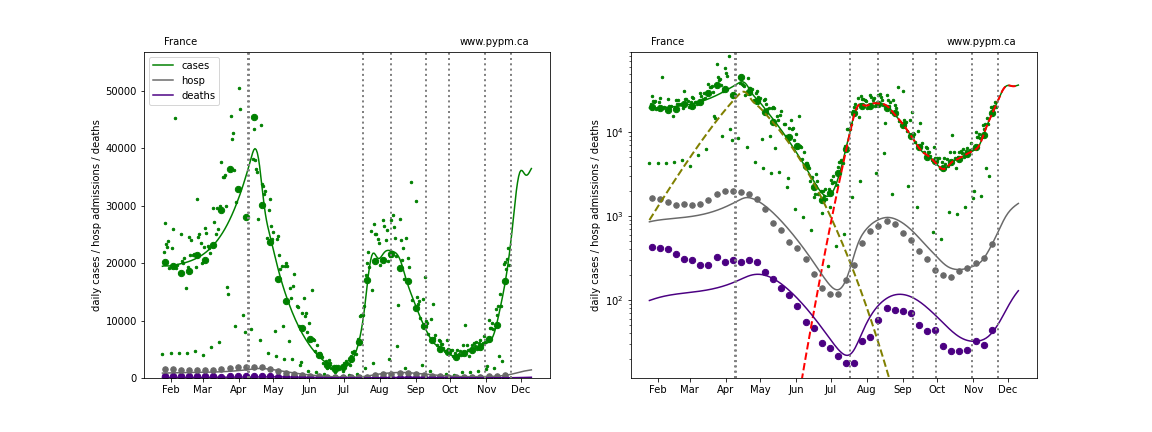
Germany
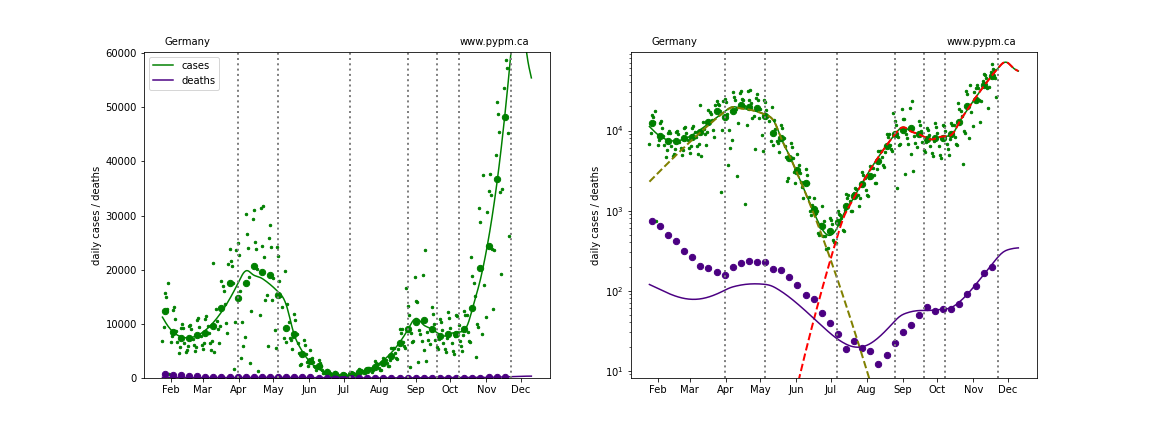
Greece
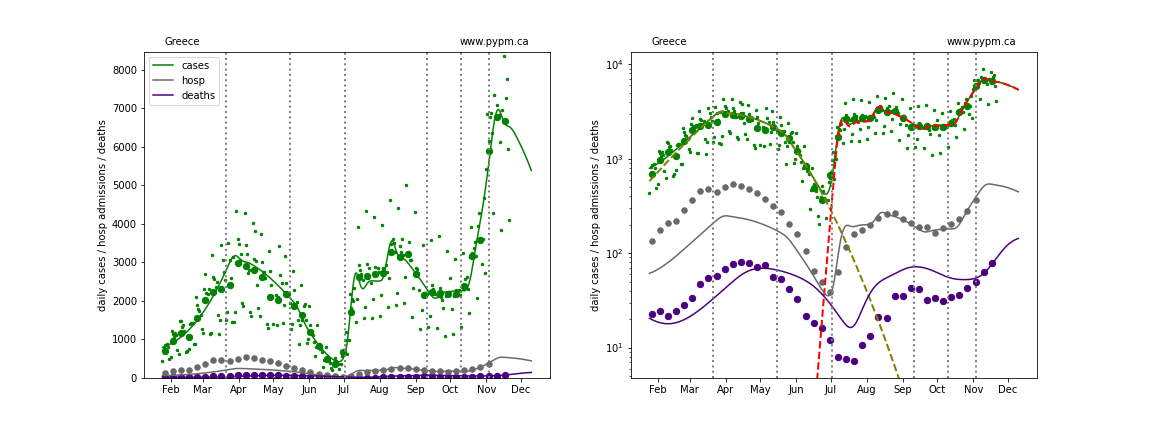
Hungary

Ireland
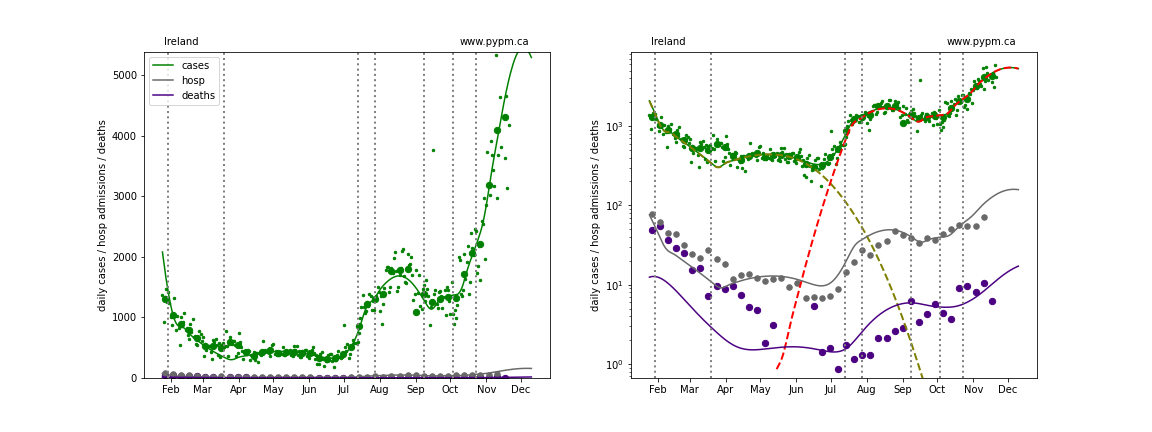
Italy
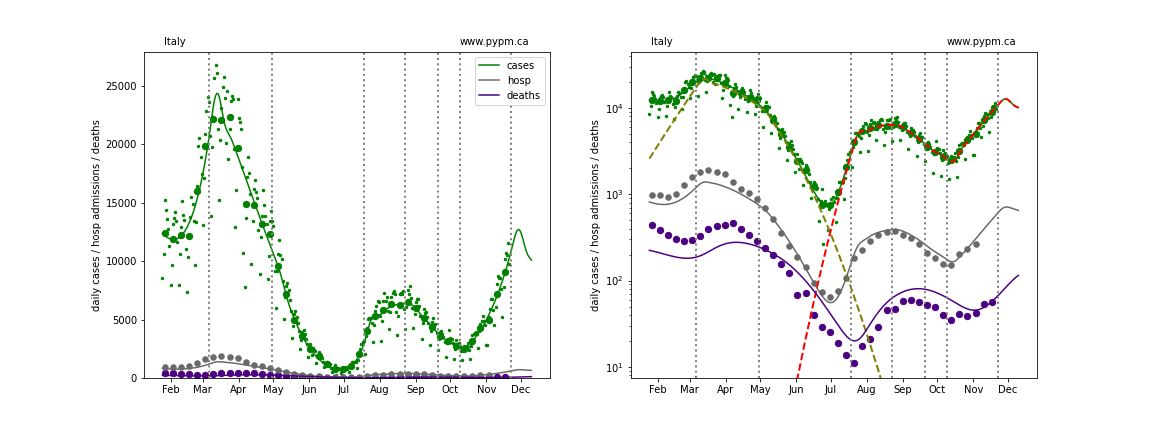
Latvia
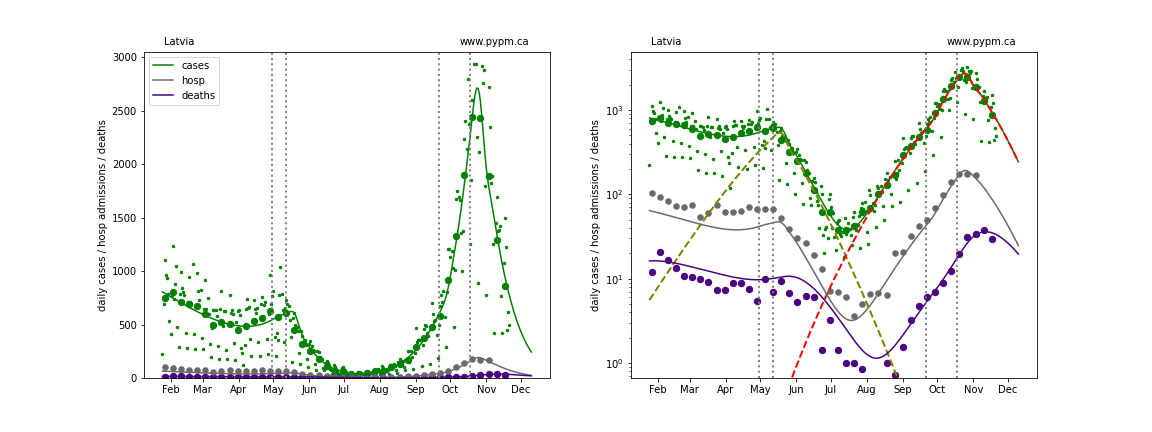
Lithuania

Luxembourg

Netherlands
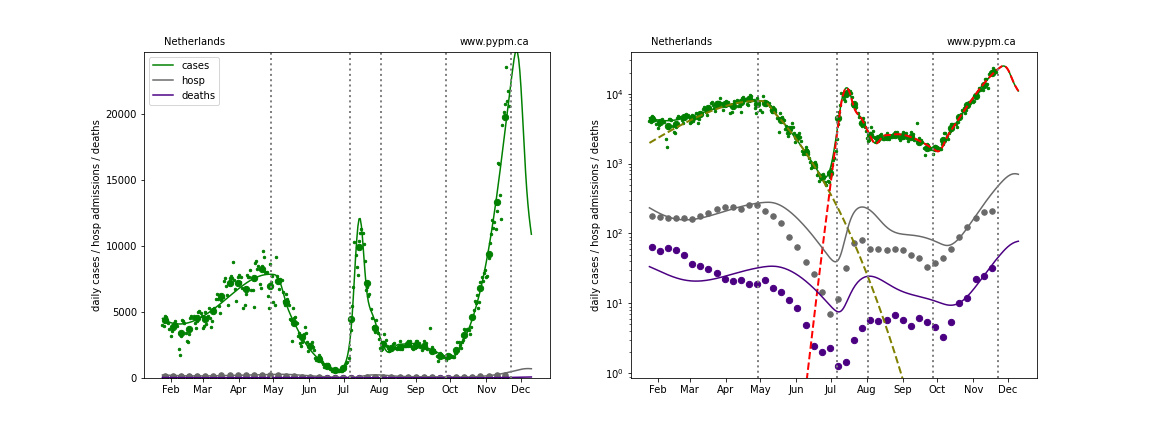
Norway
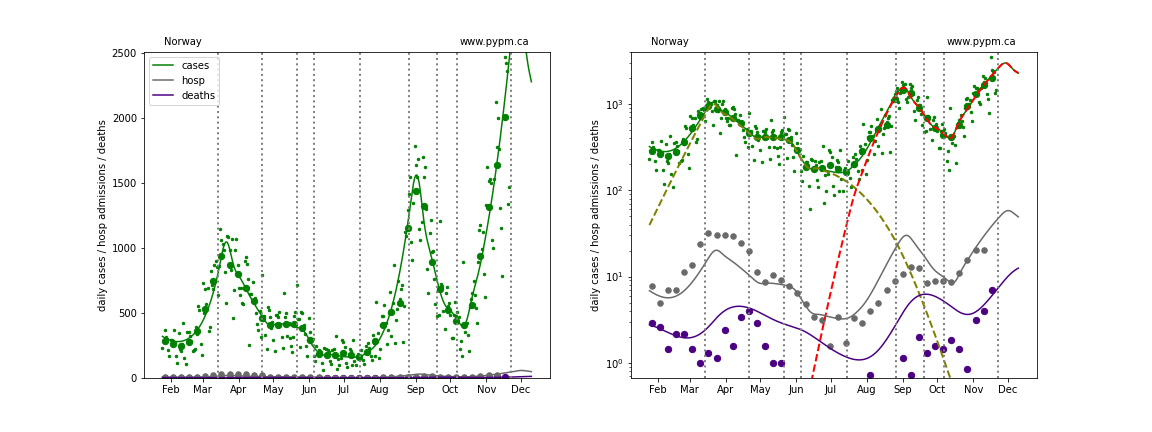
Poland
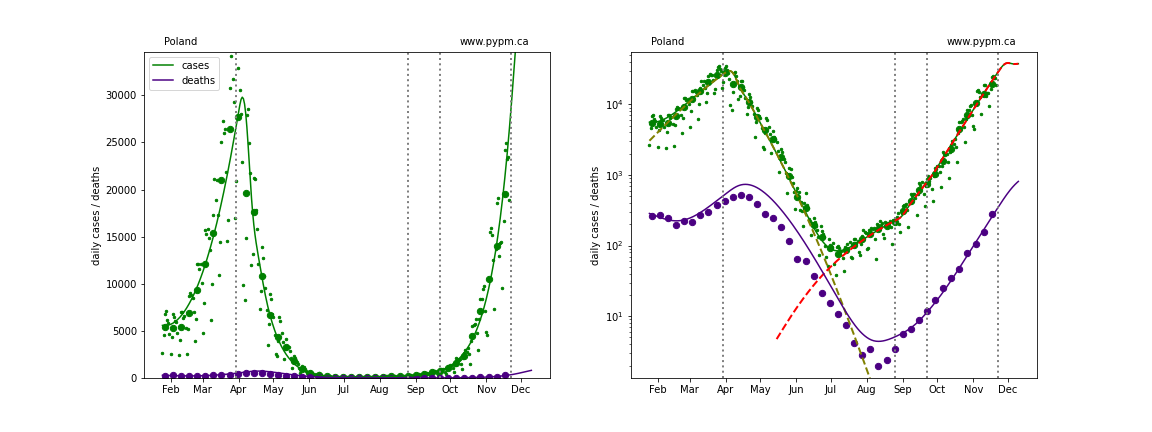
Portugal
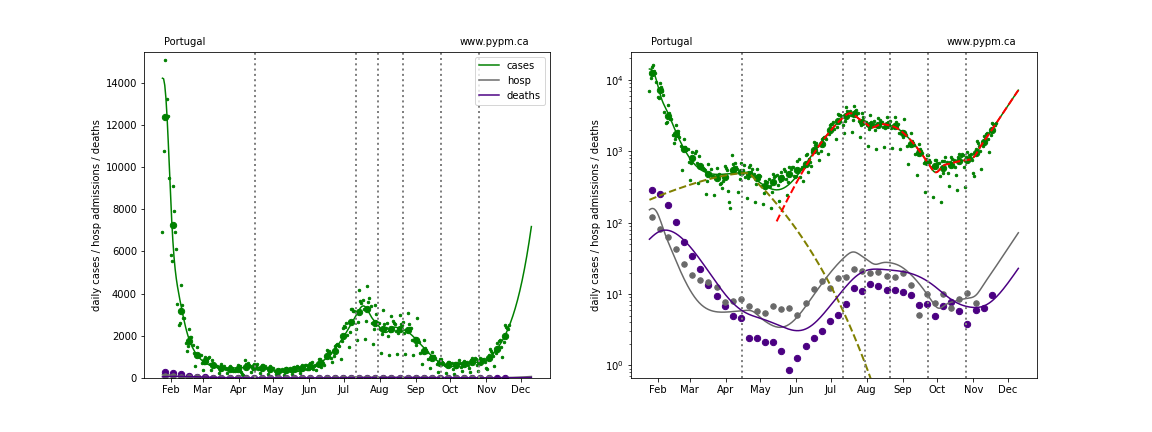
Romania
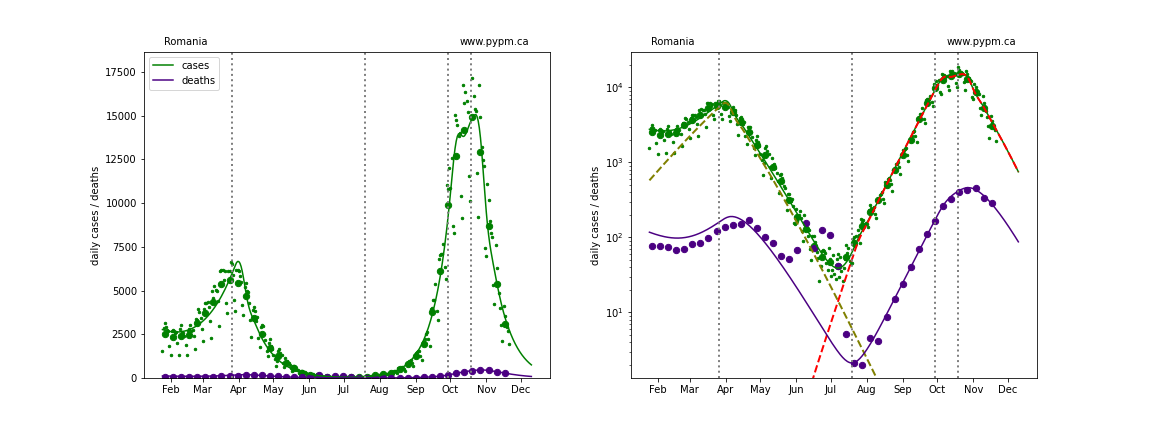
Slovakia
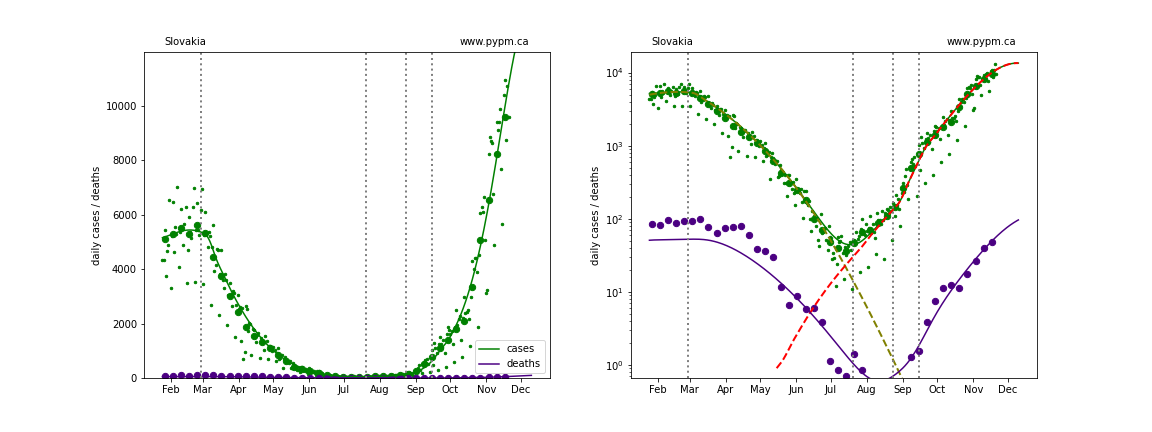
Slovenia
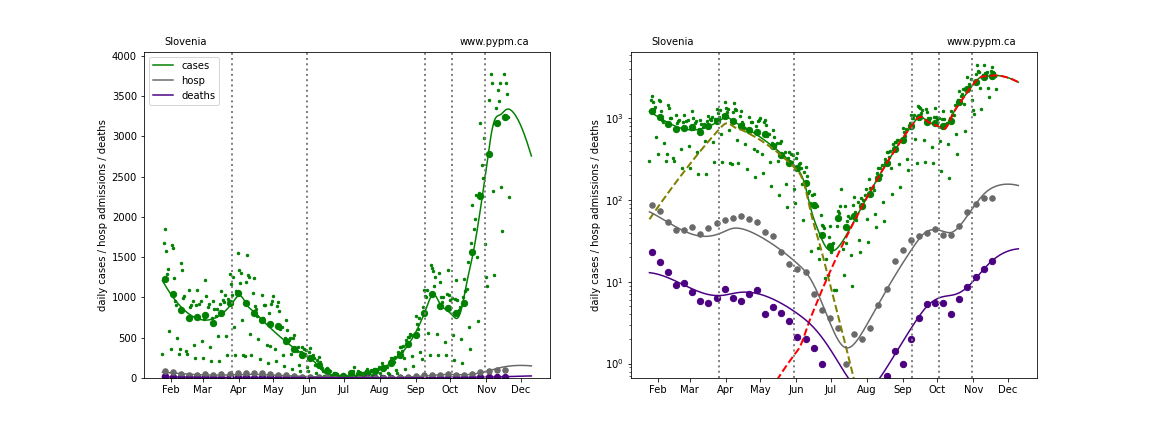
Spain
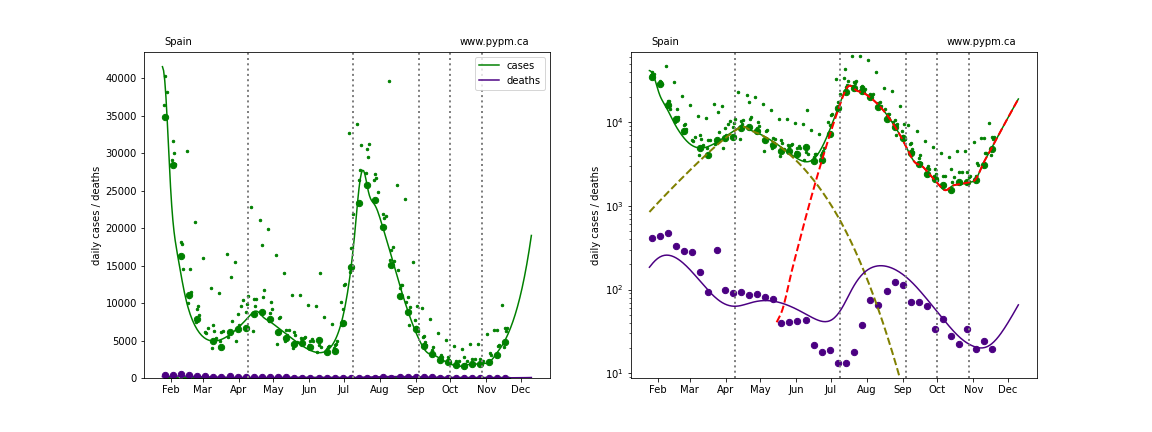
Sweden
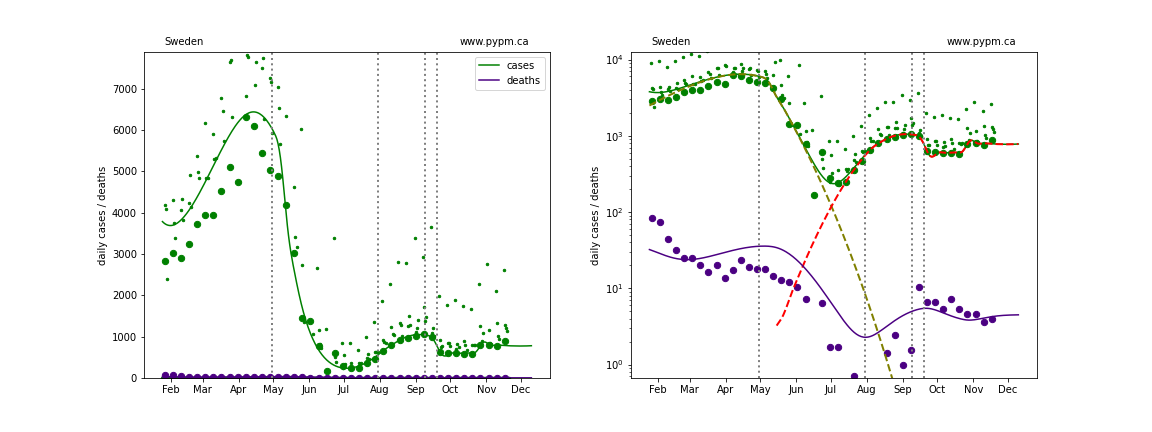
Switzerland
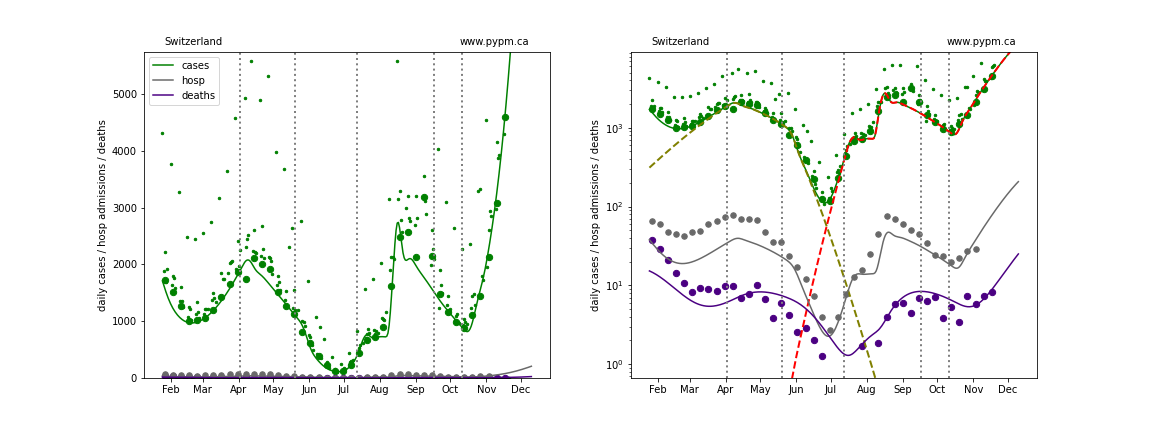
United Kingdom
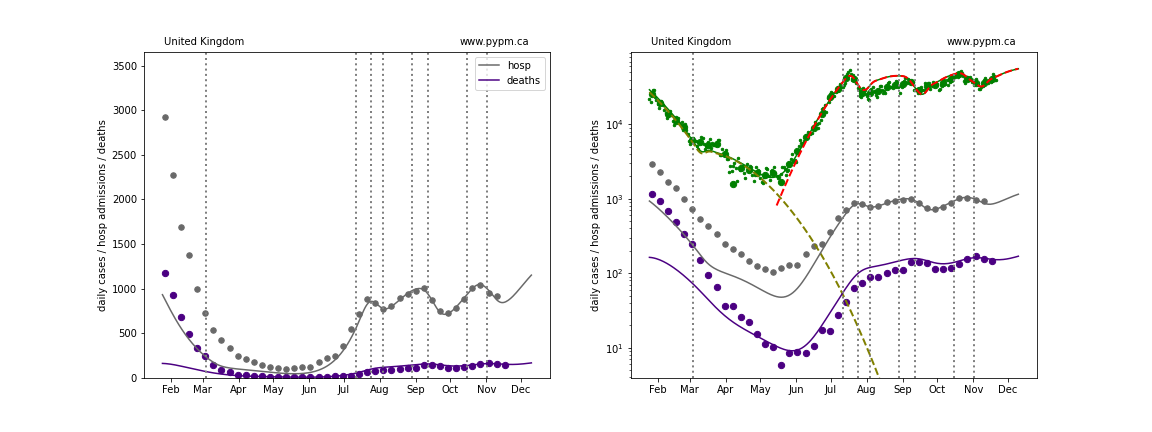
Comparing prevalence between countries
The following plots show the daily cases per 100,000 people in each country, grouped according to geographical regions.
